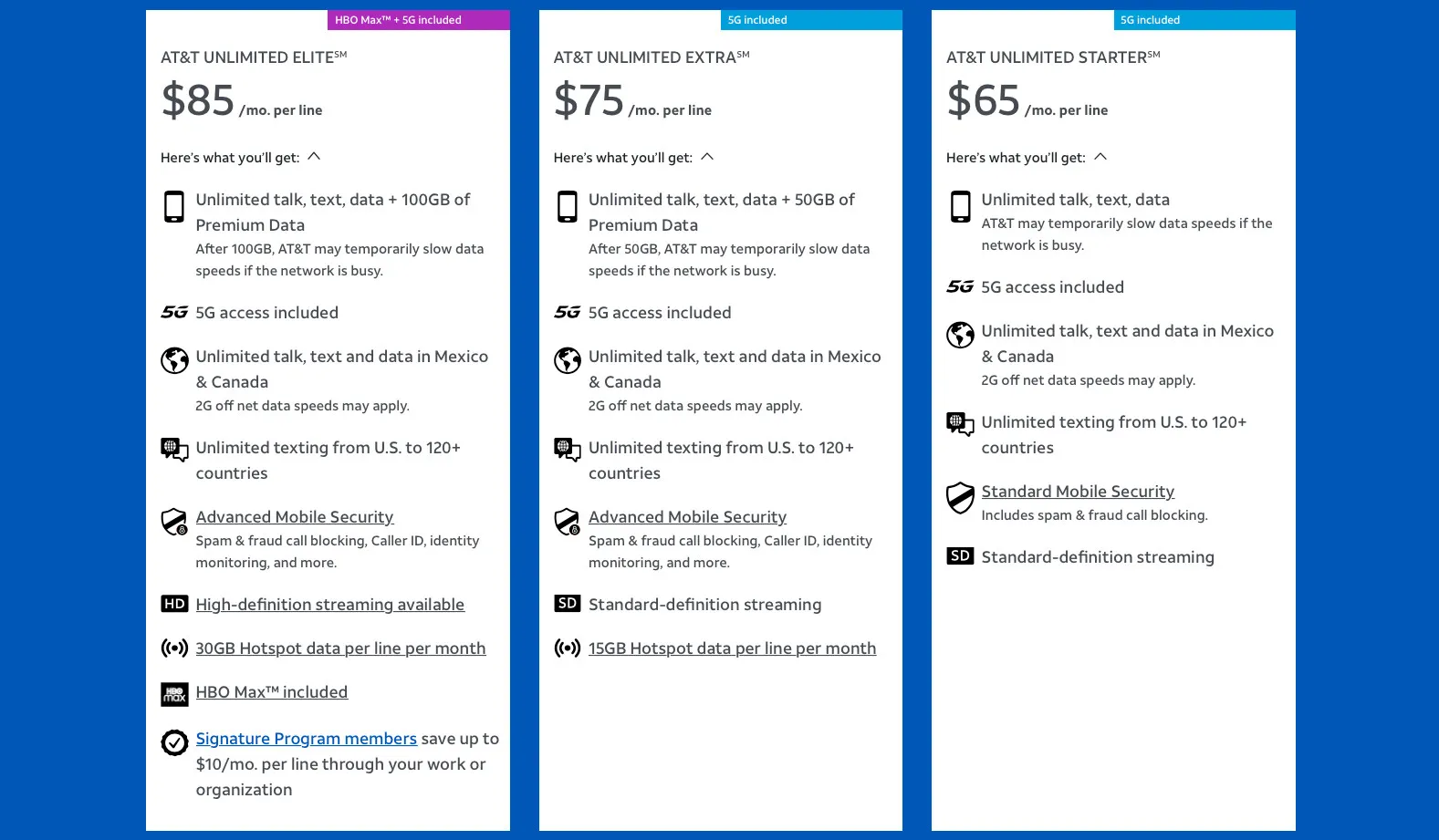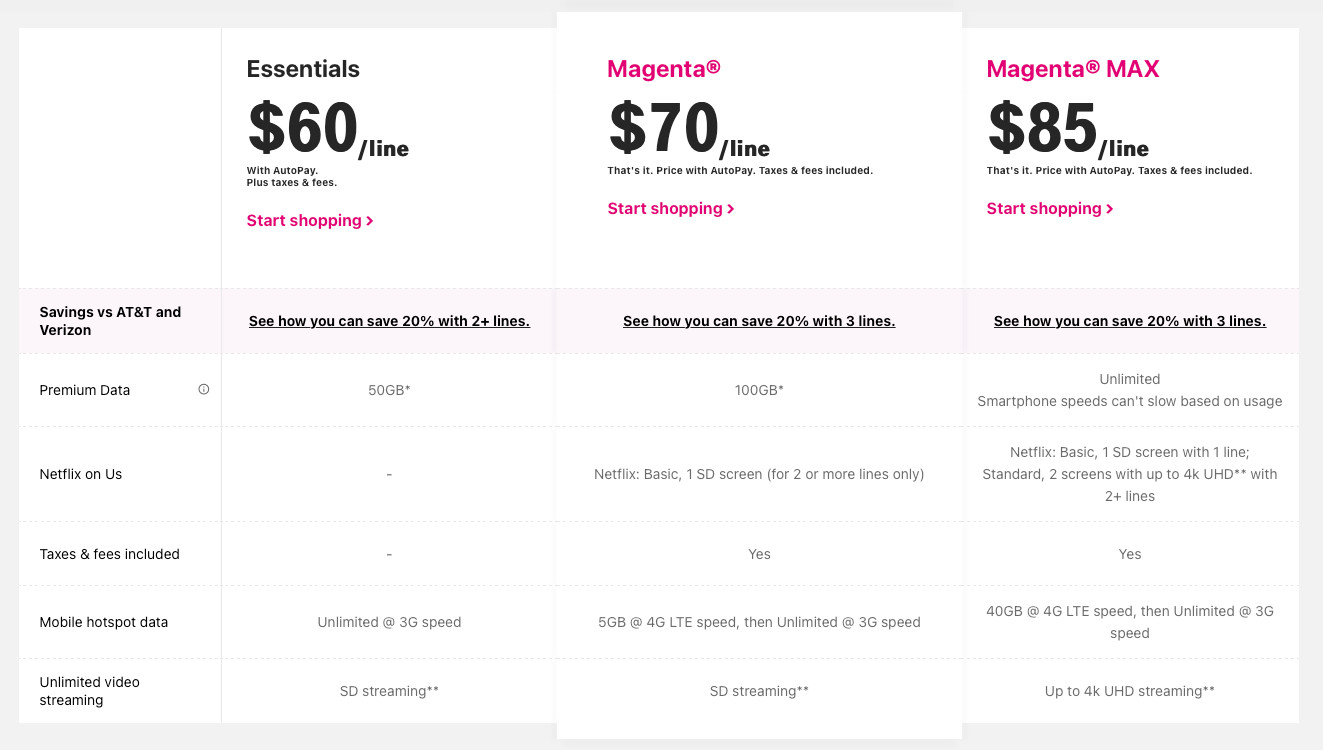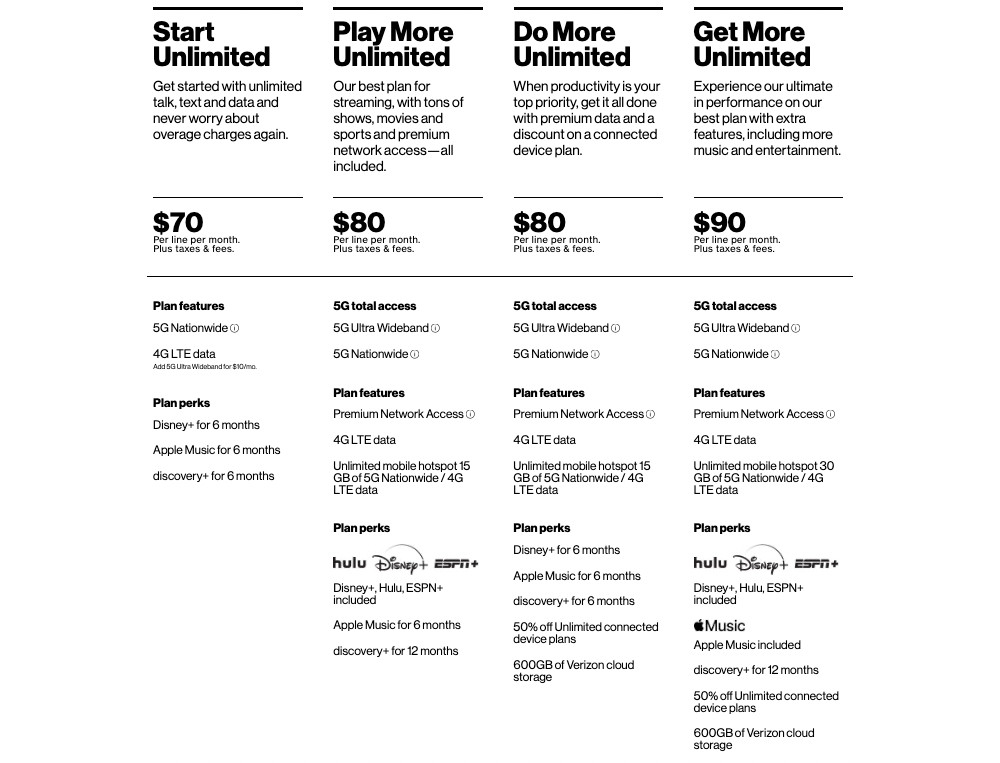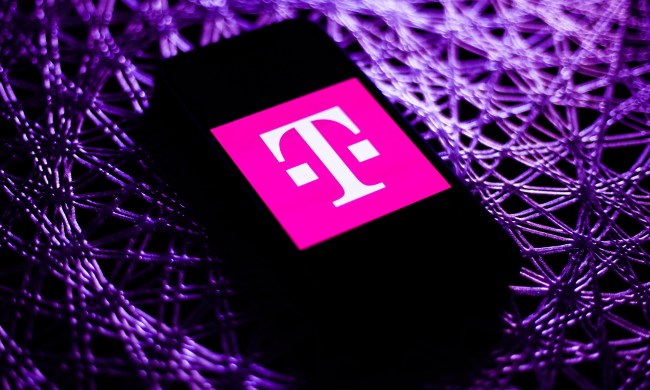There’s no doubt that 5G access has come a long way in the past couple of years or so, allowing for faster speeds across the board. All three of the major U.S. carriers now offer nationwide networks, and all include 5G support in their main plans and some of them have prepaid 5G phone plans.
Given the fact that all of the carriers offer 5G coverage in their plans, you might be wondering which offers the best
AT&T 5G Phone plans

AT&T offers three
| Unlimited Elite | Unlimited Extra | Unlimited Starter | |
| 1 Line | $85 | $75 | $65 |
| 3 Lines | $60 per line ($180) | $50 per line ($150) | $45 per line ($135) |
For most users who simply want unlimited data without any extras or frills, the Unlimited Starter plan is the way to go. You’ll still get unlimited talk, text, and data on your
The Unlimited Extra plan does have some of that premium data. With Unlimited Extra, if you’ve used 50GB or less for the month, you’ll retain top download speeds during times of congestion. Unlimited Extra also gets you 15GB of mobile hot spot data per line, per month.
Last but not least is Unlimited Elite, which doubles the premium data to 100GB, doubles the hot spot data to 30GB, and chucks in an HBO Max plan. That, of course, comes at a steeper price — it’s the most expensive high-speed data plan that AT&T offers.
All three plans offer access to AT&T’s 5G network, including its nationwide Sub-6 network, and the mmWave cells that it has in many big cities around the country. AT&T’s network is probably the weakest right now, given the fact that the wireless carrier has less spectrum allocated to its Sub-6 network compared to others. But, for most, it won’t really matter, and the company will continue to rapidly improve its network over the coming years.
While AT&T’s plans are solid for loyal AT&T customers, frankly, you can get more for less from T-Mobile. T-Mobile’s cheapest plan is $5 cheaper than AT&T’s, but it includes premium data, mobile hot spot usage, and you’ll get a stronger
AT&T Plans
Highs:
- HBO Max included in Unlimited Elite plan
- Extensive 4G network
Lows:
- Weakest 5G network for now
- No hot spot data in Starter plan
- Data throttling at any time in Unlimited Starter plan
T-Mobile 5G Phone plans

T-Mobile’s two cheaper plans are cheaper than AT&T’s with one line and with multiple lines — and they seem to offer more. The most expensive plan is the T-Mobile Magenta Max plan, which offers some features that no one else on the market currently does. First thing’s first, though — here’s a look at pricing on T-Mobile.
| Essentials | Magenta | Magenta Max | |
| 1 Line | $60 | $70 | $85 |
| 3 Lines | $30 per line ($90) | $40 per line ($120) | $47 per line ($140) |
T-Mobile Essentials is the cheapest, coming in at $60 for one line, or $30 per line for three. On this plan, you’ll get 50GB of premium data, plus unlimited hot spot usage on 3G speeds. Compare that to AT&T, which doesn’t let you use any hot spot data on its cheapest plan.
Next up is Magenta. On this plan, you’ll get 100GB of premium data, along with 5GB of hot spot data at high speeds, then unlimited at 3G speeds. Magenta also gets you a Basic subscription to Netflix, if you have two lines or more.
Magenta Max may be expensive, but it’s also great for those who really use their data. That’s because Magenta Max offers unlimited “premium data” — or in other words, it will never throttle you based on your data usage. You’ll also get 40GB of hot spot data, the ability to stream video at
The T-Mobile 5G plan was the first to offer a nationwide
T-Mobile Plans
Highs:
- A robust 5G network, compared to the others
- Cheapest plans are as good or better than rivals’
- Netflix subscription
Lows:
- Not as much high-speed hot spot data
- Overall network coverage lacking in rural areas
Verizon 5G Phone Plans

Last but not least is Verizon, which steps its plans up from three plans to four. Those plans are more expensive than AT&T and T-Mobile, and while you will get some extra perks, you’ll have to consider whether or not those perks are actually worth it for your needs. Before we go into details, however, here’s a look at Verizon’s pricing.
| Start Unlimited | Play More Unlimited | Do More Unlimited | Get More Unlimited | |
| 1 line | $70 | $80 | $80 | $90 |
| 3 lines | $45 per line ($135) | $55 per line ($165) | $55 per line ($165) | $65 per line ($195) |
As you can see, Verizon’s 5G plans are the most expensive of the bunch — and for most people with a
The next two plans cost the same, but prioritize different things. Both Play More and Do More get you unlimited hot spot data with 15GB of
Last but not least is Get More Unlimited, which gives you all the perks of Do More and Play More, plus it increases the Apple Music subscription to a full one, and gives you 30GB of hot spot data instead of 15GB.
Verizon’s plans may end up being cheaper for those who already pay for services like Disney+ and Apple Music or who plan on doing so — but people who wouldn’t use those services should probably look elsewhere. Factoring in T-Mobile’s Netflix subscription and AT&T’s HBO Max subscription is also worth doing.
Verizon’s
Verizon Plans
Highs:
- Lots of subscription offerings
- More mmWave areas than anyone else
- Largest overall network coverage, including rural areas
Lows:
- Expensive


